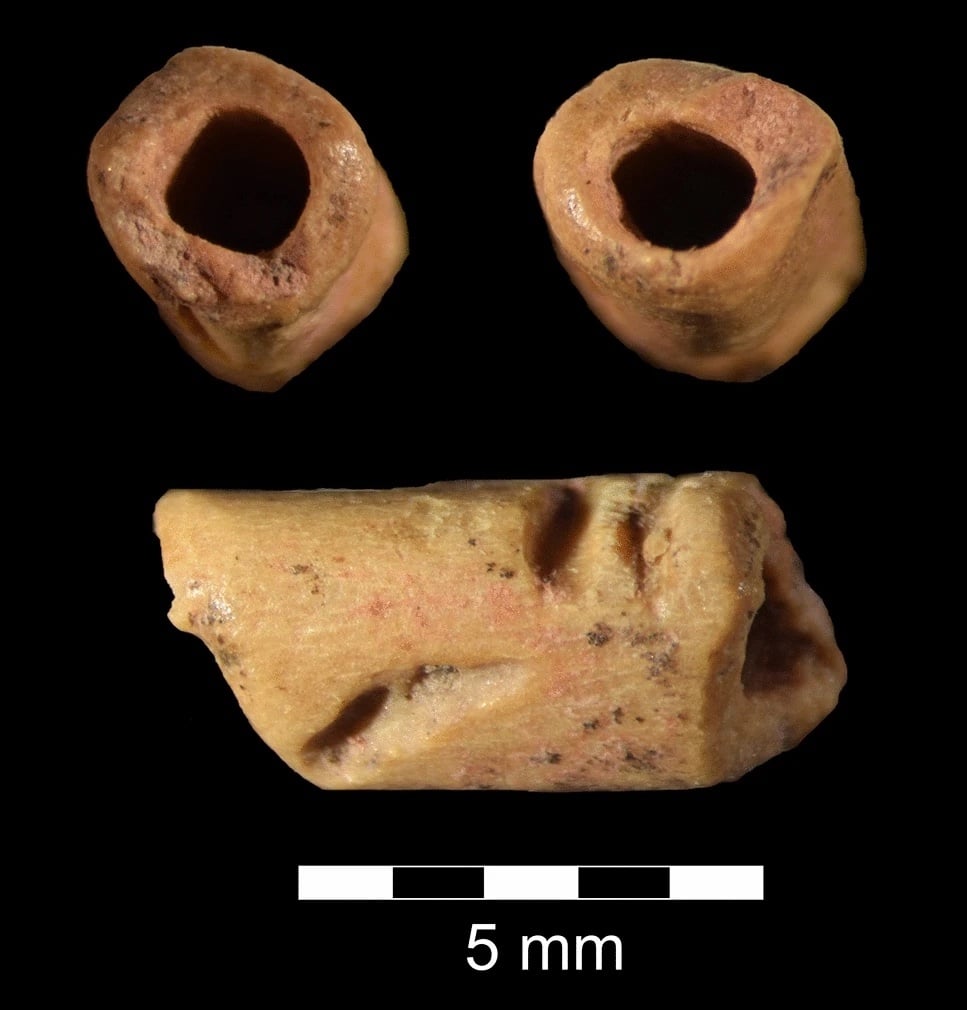
A team of experts has found a bone bead that is nearly 13,000 years old at the La Prele Mammoth site in Converse County, Wyoming, and they’re saying it is among the oldest known beads, if not the oldest, ever found in the Western Hemisphere. The bone is believed to have come from a hare, and the bead measures just a quarter-inch long.
The discovery was published in the journal Scientific Reports by a team of 11 authors, including anthropologists, archaeologists, molecular biologists and biotech experts.
Creating and wearing personal ornaments such as beads indicates “increasing human cultural and social complexity,” say the authors. The practice dates back to the Middle Stone Age of Africa. The earliest archaeological sites in America haven’t turned up much in the way of beads, they write, but Paleoindian peoples (the first to enter the region, during the Pleistocene period) have been found to have decorated their bodies or clothing with such items.
The La Prele site is an early Paleoindian site where, in 1987, chipped stone artifacts were discovered along with the partial remains of a Columbian mammoth, suggesting the butchering of the animal. The Columbian mammoth, now extinct, roamed an area from the northern United States to as far south as Costa Rica during the Pleistocene, and stood as much as 14 feet high. Later excavations uncovered the remains of a camp centered on a hearth.
The experts relied on techniques like zooarchaeology by mass spectrometry (ZooMS) and matrix assisted laser desorption/ionization time of flight mass spectrometry (MALDI-TOF MS).